1. Plan ahead and know local regulations
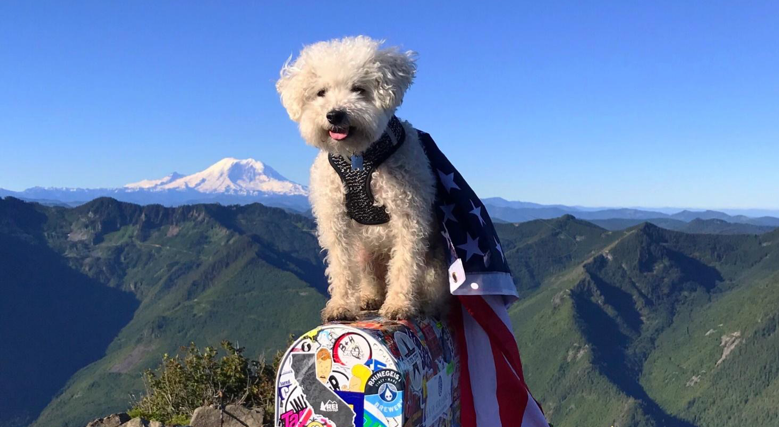
PNW canine beau Largent checking the mail at Mailbox Peak, with Mt. Rainier in the background. Photo courtesy @largenttheadventuredog.
- While a handful or more national parks allow pets to have complete or partial access, most people are disheartened to learn that they are typically not dog friendly. In many places, it is actually illegal to bring your furry friends because the ecosystem is fragile, has wildlife that must be protected, or it simply has dangerous or rough conditions that are unsuitable for a dog.
- Upon getting a permit, some national parks and monuments do allow service dogs to accompany their humans. However, companion and emotional support animals do not fall under this category and trying to pass off a non-legitimate SD undermines the agency of people who are disabled.
- What you can do instead is plan ahead before your trip. National Park Paws, official national park websites, ranger stations, and local travel websites provide a wealth of information on which areas are dog friendly. Additionally, many neighboring national forests, wilderness areas, and state parks are totally dog friendly and are a great option for outdoor exploration.
- But when it comes down to it, your dog doesn’t care where you go as long as they get to go with you! So research beforehand to set up for a successful trip, but leave Fido at home for your human-only explorations – the parks, rangers, the local ecosystem, and your fellow hikers will thank you for protecting these serene landscapes.
2. Leave No Trace
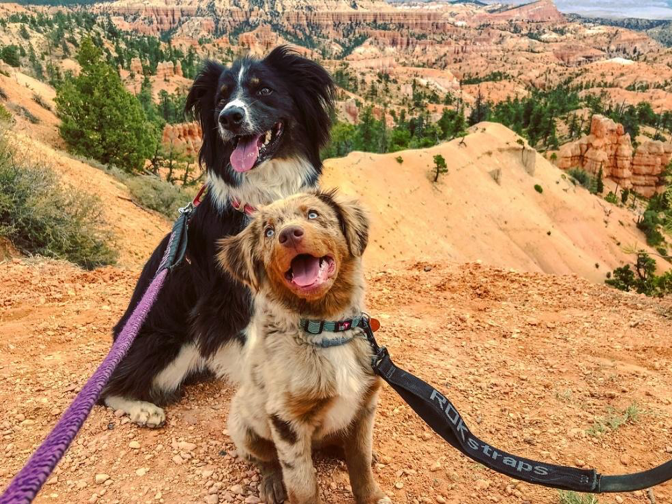
Sun’s out tongues out! Aspen and Sadie in Bryce Canyon NP in Utah. Photo courtesy @twodogsonetale
The Seven Principles of LNT for humans is extremely important for the preservation of natural areas and ecosystems. When you throw a dog into the mix, that means there’s an extra set of paws to reduce footprints for. A good guideline for responsible canine exploration is B.A.R.K.:
- Bag your dog’s waste
- Always use a leash
- Respect wildlife
- Know where you can go
Some national parks also offer a Bark Ranger program for you and your dog to become experts in these principles and the specific guidelines of that park. Learn more about the program here.
3. Please don’t do it for the ‘gram

With the popularity of social media and the temptation to snap an epic shot, there’s an overabundance of pictures circulating online that shows dogs in non-pet friendly areas. Sharing improper photos and geo-tagging on social media can lead to the perpetuation of misinformation and the overloading of trails. Examples might include posting images that violate LNT principles, tagging known popular trails by name, or tagging a national park without specifying a pet friendly location.
Of course there is no problem with an all-out photoshoot in approved areas – go for it! But keep in mind the impacts of what you share online.
4. What do to with the poop?!
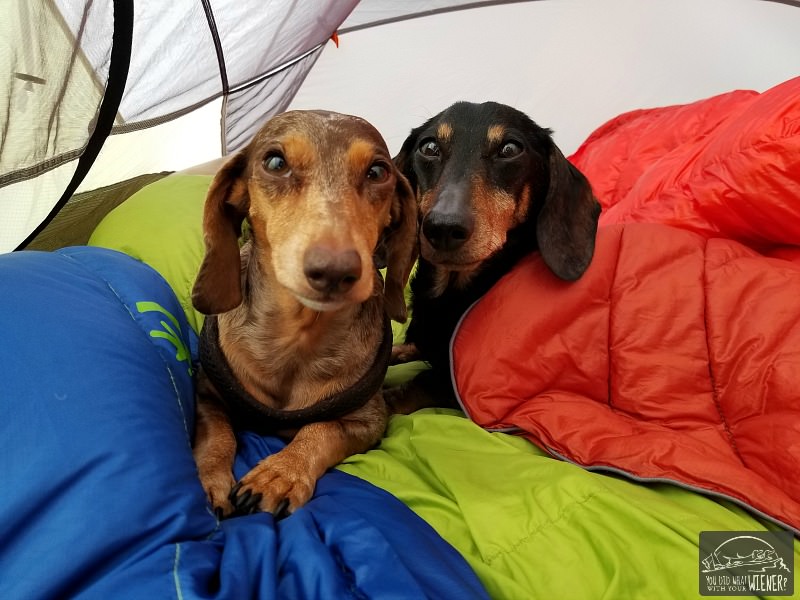
Here are the intrepid weenies behind @youdidwhatwithyourwiener
Most of us know that pet waste should be bagged and tossed, whether we’re doing a day hike together or visiting an established campsite. But what is the proper way of dealing with pet waste on overnight or multiple day trips in the backcountry?
We talked to Environmental Scientist Jessica Rhae Williams, who runs the adventure dog account and blog @youdidwhatwithyourweiner, about all things poop related. Before becoming a professional blogger, Jessica worked for a combined 18 years as an Environmental Consultant, Water Quality Specialist, and as a maintenance and stewardship technician at Olympic National Park.
According to Williams, “the best answer is always to bag it, carry it out, and dispose of it in the trash.” You can bring along airtight and reusable containers such as a LOCSAC, Wag Bag, or a Potty Tube to pack it out with the rest of your trash. However, it may not always be realistic or desirable to carry it out. “The next best thing is to bury waste [without the bag] in a cathole 6-8 inches deep (4-6 inches in the desert) and at least 200 feet (about 70 adult steps) away from trails [and] water sources.”
However, Williams goes on to say that there are other considerations when using a burial method: “Burying waste is an approved LNT technique but also often requires that you step off trail and disturb vegetation. In this case, it’s a matter of leaving the least trace you can. Choose areas little or no vegetation if you can while also finding a suitable spot to dig a hole away from water.”
5. Your dog might not immediately like camping…
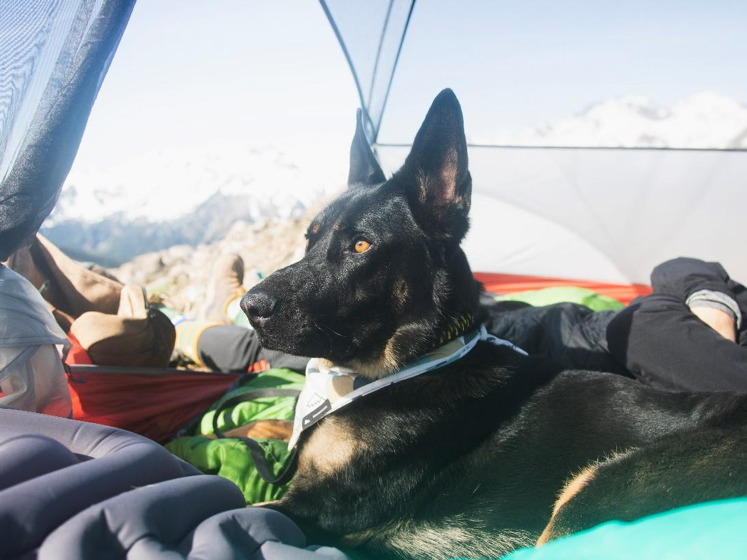
Milo enjoying the panoramic morning views at Marmot Pass. Photo courtesy @milotheshepski
… or they might need a little training in order to enjoy it! One of the big things is the concept of a tent to a dog. The walls are flimsy, they can’t see outside, and it may feel like being boxed in when all zipped up.
To help with this, training them at home is very helpful. If your dog is crate trained, tent training your dog is very similar. Let them sniff it, keep the door open and top fly off, use positive reinforcement, go in there with them, ask them to sit/down while inside, etc. While you shouldn’t expect your dog to be in there without you, it certainly helps to teach boundaries beforehand in case they suddenly gets the urge to bolt outside.
6. Be realistic about leashes and recall
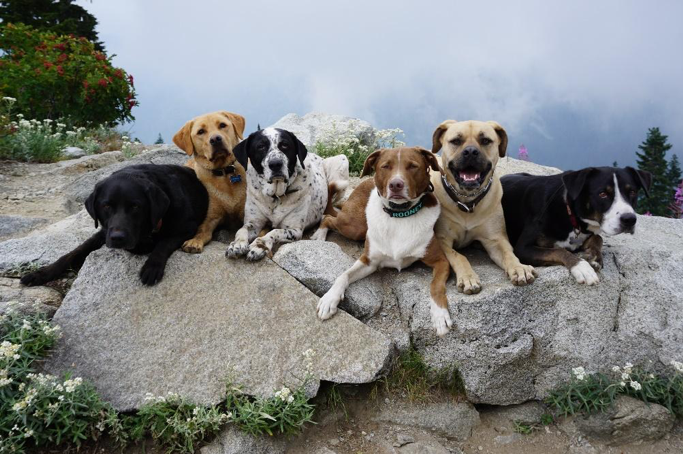
Rooney and friends holding calm down stays for a group photo at the Josephine Lake Trail, a portion of the Pacific Crest Trail. What a great looking pack! Photo courtesy @rmark04
The majority of accessible trails require dogs to be on a leash no longer than 6 ft. at all times. But in some places, such as wilderness areas or the backcountry, there is no clear leash regulation. In these places, the terrain may be rougher, the experience wilder, and there’s more possibility for something to go amiss. Before deciding whether to let them off leash, first ask yourself:
Is your dog currently in training or known to be fearful/leash-reactive/aggressive?
We believe that all dogs have the right to share pet-friendly trails if their owners are mindful and responsible. Remember, you are your dog’s best advocate, so if your dog has some special needs make sure to contact your trainer for ideas, techniques, and/or appropriate tools to practice at home and don’t be afraid to tell others on the trail if you need space. If in doubt, leash your dog.
Then, make sure that you:
Train your dog in off-leash obedience
Some breeds were genetically selected to have high prey drive or to run exhaustively, or may simply have independent or stubborn temperaments. This does not mean they cannot be trained. Contact your trainer to learn some drills and skills to practice in controlled, low distraction environments and then working up in distractions before attempting off-leash on the trail. Be honest with how well you and your dog communicate and how far you are in your journey towards reliable voice control.
Commit to staying vigilant at all times
Leashing a dog is the best way to prevent problems from occurring, but if you do let your dog off leash, you must be cognizant of the environment for them. Some things you will encounter includes other dogs, other humans, wild animals, dangerous plants and mushrooms, random scent trails, rough terrain, etc. Keep in mind the current life stages and activities of wildlife (such as breeding or feeding). If there is something you don’t want your dog to interact with, you …
Are able to recall your dog back even with distractions
Assuming other dogs, humans (especially children), and wildlife are okay with your off-leash dog is a mistake you do not want to make. At the sight of any of dogs or humans, make sure to recall your dog back right away to be leashed and pull off to the side of the trail. People without dogs always get the right of way. We also recommend not allowing your dog to greet an unknown dog on the trail since it is often narrow and would be a bad place to get into a scuffle. In the case of a wildlife encounter, take the proper actions.
Set a distance boundary
Some dogs naturally scout ahead and check back in on their own. But for dogs that go too far ahead, be proactive and set a distance boundary. This means to recall them before they get past a certain threshold so that they learn what is acceptable to you. This is especially helpful on trails that have a lot of switchbacks, foliage, or hills where you cannot always see your dog.
7. Be realistic about exercise during the week too

Gatsby is off to some great adventures! At five months old, Gatsby’s mom is making sure they stick to shorter trails so he doesn’t push himself too hard. He’ll make a full-fledged adventure dog in no time! Photo courtesy @greatlifeofgatsby
So you have your adventure dog – fantastic! While we believe that any breed or age of dogs can be adventure pets, different types have special considerations:
- Regardless of size, if you have a historically bred working dog or a dog that simply has a ton of energy, it might not be feasible to only be weekend warriors. Your dog will definitely enjoy their longer excursions with you into the wilderness, but make sure your lifestyle matches and keeps them physically and mentally active during the week as well. This might include daily walks/runs, training sessions, structured day cares, and mental/sensory games and activities. A tired dog is a happy dog!
- On the other hand, if you have a dog with certain physical limitations or an older dog that still loves to get out into the fresh air, get an idea of how much activity is doable for them. Maybe you’ll have to carry them in your pack for part of the trip, stick to paved paths, or make a lot of pit stops along the way. They’ll surely appreciate your consideration for them.
- If you just brought a brand new adventure puppy home, congratulations! Keep in mind that they are very young and their immune systems are not fully developed yet. Additionally, their growth plates have not fused, so keep to short excursions to avoid injuring their joints. Consult with your vet how many vaccination sets must be completed and what timeline should be followed before letting a pup interact with certain environments.
8. Food and Hydration
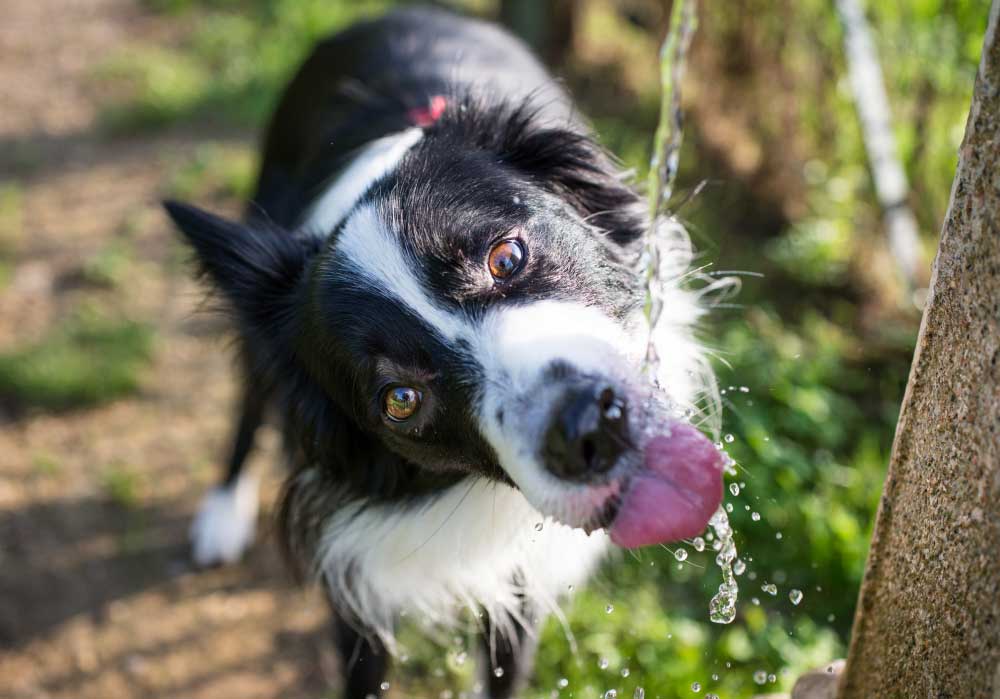
Hiking for humans is an energy expensive activity and it’s no different for dogs. Make sure to bring along at least 1.5 the regular amount of food they would eat at home plus high protein snacks. Do not expect them to hunt or live off the land. According to the National Forest Service, doing so is prohibited by leash and game laws, and “a dog unused to such a dangerous environment will usually be injured (or worse).”
As another part of planning ahead, always have a plan for water during long hikes and on overnights. Although it is tempting to let your dog drink out of natural water sources along the way, it does come with some pathogenic bacterial risks such as Giardia or Leptospira (Lepto vaccination available – ask your vet) that live especially in stagnant water. This can not only affect your dog, but can possibly be passed on to humans as well. In general, it’s best to filter and carry water for yourself and your dog and only allow them to drink out of fresh moving water.
9. Don’t forget about aftercare
After returning home from an adventure, humans and pets alike are exhausted. Some aftercare includes checking their entire bodies for tics and burs, applying a paw hydration wax or cream, offering a nutritious meal, plenty of water, and rest etc.
10. Have a plan in case things go south
Responsible pet owners will try to prevent any mishaps from happening through preparation (like reading this article! Yay!). But the reality is, accidents can happen at any time. Not only for your dog, but make sure you and your travel companions discuss any special considerations for the trip and what steps you will take should something unfavorable occur. Make sure you have the 10 Essential Systems (for humans). Split up duties or supplies to carry and make sure everyone is on the same page for your trip plan.
Have any more helpful tips or experiences you’d like to share? Let us know in the comments below!
Now get out there and happy campin’!
Do you like camping with horses? Check out this helpful article


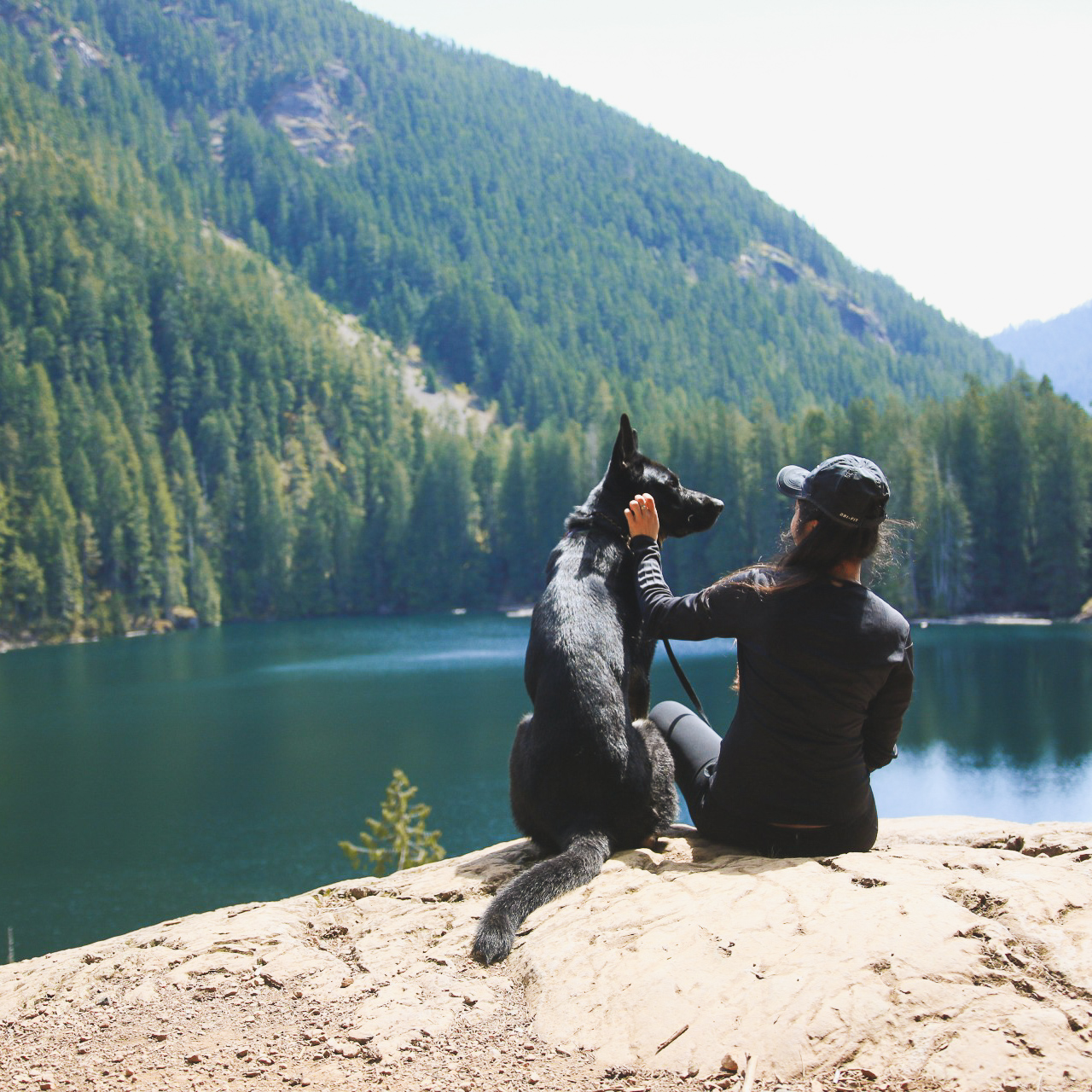

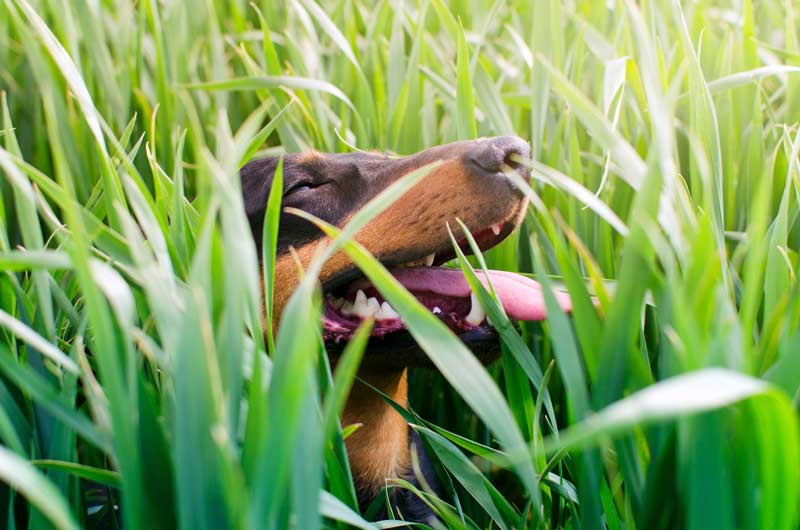
Leave a Comment